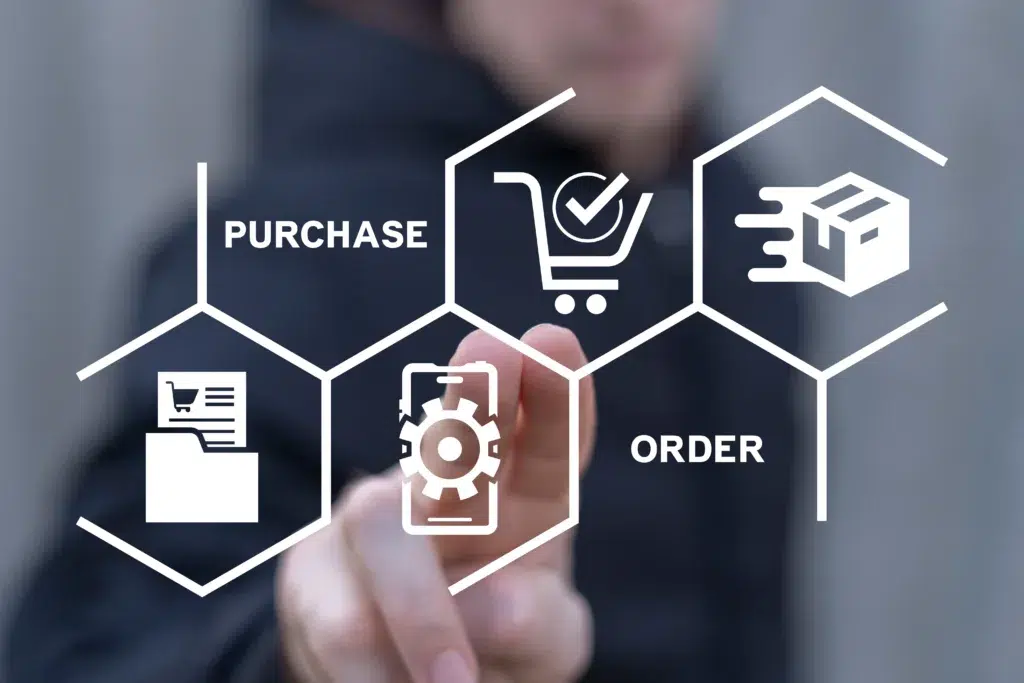In construction, keeping projects on budget and on schedule is crucial, and a lot of that control comes from effectively managing purchase orders. A purchase order, or PO, is basically an official agreement to buy products or services. Getting this step right can prevent some of the common headaches, like delays and budget issues.
In this post, we’ll break down the construction purchase order process. You’ll learn why it’s so important and get some practical tips on handling it smoothly, whether you’re a project manager, subcontractor, or general contractor. Ready to get a handle on your purchase orders? Let’s get started.
Table of Contents
The process of creating construction purchase orders
Creating construction purchase orders involves several vital steps to ensure that materials and services are ordered, delivered, and paid for in an organized and legal manner. Here’s how the process typically unfolds:
1. Creating the Purchase Order:
- The process begins with the construction company’s procurement team creating a purchase order. This document specifies what materials or services are needed, the quantities, the agreed prices, and the expected delivery dates. It is a formal request to a supplier or vendor to provide the specified items or services.
2. Approving the Purchase Order:
- Before the purchase order can be sent to the supplier, the construction company must review and approve it. This step usually involves checks by the project manager or procurement officer to ensure that the order aligns with the project budget and needs. Approval is crucial as it signifies the company’s commitment to the transaction under the terms laid out.
3. Sending Out the Purchase Order:
- Once approved, the purchase order is officially sent to the vendor. This can be done via email, a digital procurement system, or even through traditional mail, depending on the company’s and vendor’s operating methods.
4. Delivering the Goods or Services:
- Upon receiving the purchase order, the vendor confirms acceptance of the terms and proceeds with the preparation and delivery of the goods or services as specified. The delivery must match the specified quality and timeline to meet the construction project’s schedule.
5. Sending an Invoice:
- After delivering the goods or services, the vendor sends an invoice to the construction company. This invoice should match the details outlined in the purchase order and confirm that the terms of the agreement have been met. The invoice requests payment for the delivered goods or services.
6. Completing the Transaction:
- The final step involves the construction company reviewing the invoice and, assuming everything is in order, making the payment to the vendor. This completes the financial transaction. Proper documentation of this process is kept for accounting and auditing purposes, ensuring that everything is above board and in compliance with legal and financial standards.
Once the buyer accepts the purchase order, it becomes a legally binding agreement. It lists the materials needed, the agreed prices, delivery schedules, and payment conditions. Essentially, the purchase order gives clear instructions to the buyer and creates a detailed record of the transaction.
When the person who creates the purchase order sends it to the recipient and it is accepted, it then becomes a binding contract. This means neither party can back out without possibly facing legal action.
How to improve your construction purchase order process
Here are some easy ways to save time and money with your purchase orders, especially when using the Bauwise construction purchase order software, which can save you up to five hours per week.
1. Set Up an Automated Purchase Order System
Using construction software can help speed up your operations and minimize mistakes. By implementing an automated system, you can create and manage your purchase orders online. Just input the order details, and the software will automatically send them for approval to the people responsible for your project. This automation streamlines the process and keeps things moving smoothly.
2. Use Standard Purchase Order Templates
It’s beneficial to use standardized templates for your orders. This ensures all your documents look professional and consistent. Bauwise offers customizable templates you can reuse for future projects, saving you the hassle of starting from scratch each time. This is particularly useful if you regularly order the same materials, as it reduces the time spent entering repetitive information.
3. Keep Vendor Information in One Place
Bauwise allows you to store all vendor-related information, including contact details and purchase history, in one central location. This makes it easy to quickly find and communicate with vendors or review past orders. Having access to previous transaction details can guide your future purchasing decisions.
4. Build Strong Supplier Relationships
Maintaining good supplier relationships can lead to better prices and more favorable terms. When suppliers know and trust you, they will likely fulfill your orders promptly. Paying on time and providing well-organized orders helps build a foundation of trust. Bauwise also enables you to track and manage supplier performance, ensuring you continue working with the best.
5. Monitor and Analyze Purchase Data
Keep an eye on your purchasing data to spot billing issues or potential ways to cut costs. Tracking your purchase habits may reveal opportunities, such as buying in bulk, which could reduce expenses and maximize savings. This data analysis is crucial for making informed purchasing decisions.
6. Switch to Electronic Invoicing and Payments
Consider switching to electronic methods to simplify your invoicing and payment processes. Electronic transactions are faster and eliminate the need for physical paperwork. With Bauwise, you can handle invoices and payments digitally, ensuring prompt payments and strengthening your supplier relationships while avoiding delays caused by manual processing.
Benefits of Using Construction Purchase Orders
Purchase orders are beneficial for keeping a documented record of buying agreements, which can be essential if any disputes arise. Think of purchase orders like a detailed map of what was agreed upon. For example, if you receive a delivery and the materials are incorrect or don’t meet the expected quality, having a purchase order helps pinpoint where the mistake occurred.
You might deal with hundreds of purchase orders from various vendors in large projects. Well-documented orders not only give clear instructions to suppliers but also serve as a reliable way to check records if something goes wrong.
Furthermore, maintaining orderly records of all purchases helps prevent ordering the same items more than once. Having all this information in one place also improves the tracking of payments and costs, which can help keep your project within budget and on schedule.
To get started with construction purchase orders, read our other blog post: All you need to know about construction purchase orders.
Conclusion
Purchase orders are a permanent fixture in the construction industry, and they might even become a bit more complex as they require more details. However, contractors can be comfortable knowing that software can streamline the process. This software not only helps manage these orders but can also automatically fill out much of the information. This saves contractors from spending too much time on purchase orders and ensures nothing gets overlooked.
While purchase orders can be tedious and frustrating, they are essential in construction. They help prevent misunderstandings and disputes over verbal agreements, so it’s crucial for contractors to diligently use them for all their purchases.
About the Author

Mikk Ilumaa
Mikk Ilumaa is the CEO of Bauwise, a leader in construction financial management software with over ten years of experience in the construction software industry. At the helm of Bauwise, Mikk leverages his extensive background in developing construction management solutions to drive innovation and efficiency. His commitment to enhancing the construction process through technology makes him a pivotal figure in the industry, guiding Bauwise toward setting new standards in construction financial management. View profile






